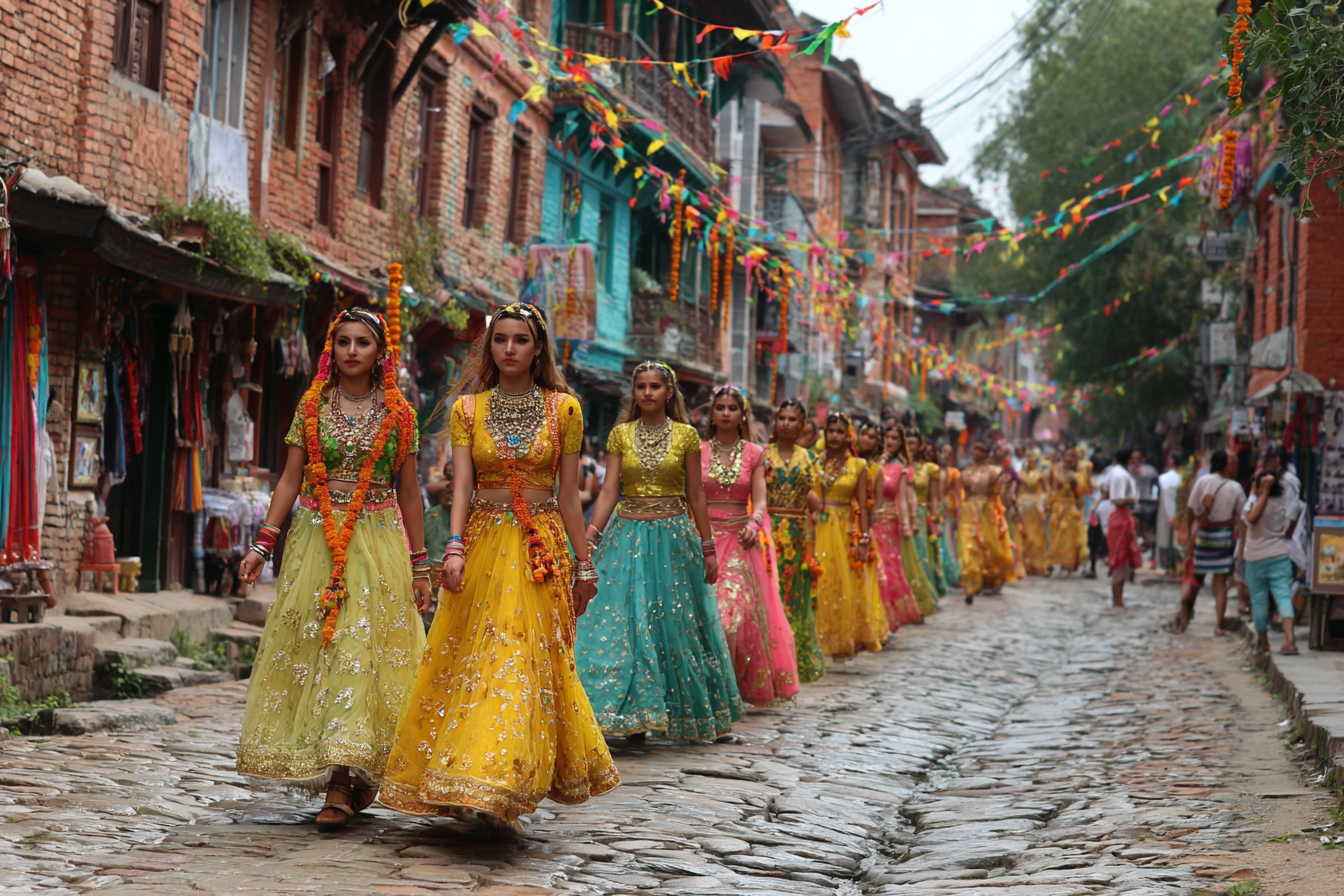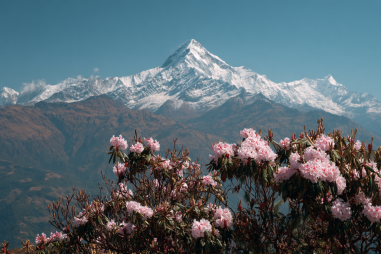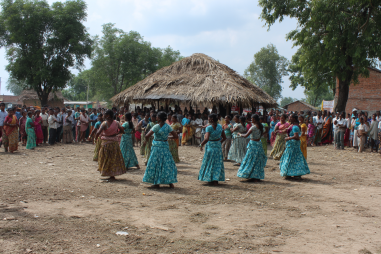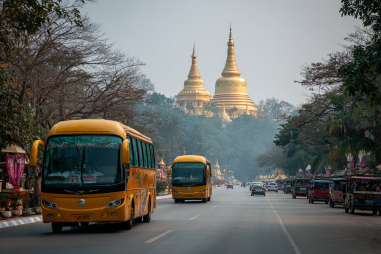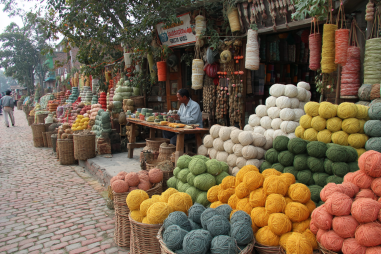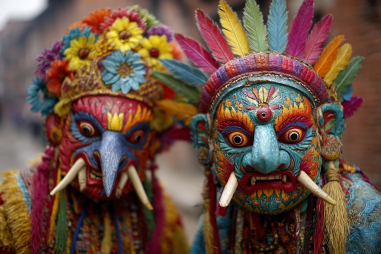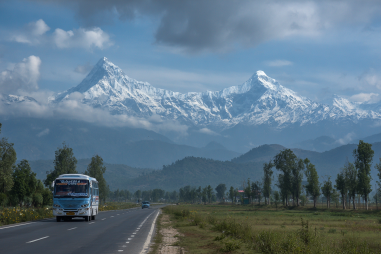Bandipur, a charming hilltop town in Nepal, is known not only for its breathtaking landscapes and traditional architecture but also for its rich cultural heritage expressed vibrantly through its festivals. These celebrations offer visitors a unique window into the local customs, beliefs, and communal spirit that have been preserved through generations. Whether you’re a cultural enthusiast or an adventurous traveler, immersing yourself in Bandipur’s festivals is a memorable way to experience the heartbeat of this enchanting destination.
Introduction to Bandipur Festivals
Bandipur’s festivals are an intrinsic part of the town’s identity, reflecting the harmonious blend of Newari and Gurung cultures. The festivals are not just celebrations but also community gatherings that strengthen social bonds and religious devotion. Each festival carries its own significance, linking back to ancient traditions and local legends. Visiting during festival times means witnessing authentic cultural expressions—music, dance, rituals, and sumptuous feasts—that bring the town’s narrow, cobbled streets to life. This guide will walk you through the most important festivals in Bandipur, giving you insights on their meaning and how to participate respectfully and joyfully.
Overview of Major Festivals Throughout the Year
Bandipur’s calendar is dotted with vibrant festivals celebrated by different ethnic communities. Here are some of the key festivals that you should consider timing your visit around:
- Maghe Sankranti: Celebrated in mid-January, this festival marks the end of the winter solstice and the beginning of longer days. It is a time for purification rituals and traditional food preparations.
- Ghode Jatra: This horse festival, held in Kathmandu but also celebrated in Bandipur, involves horse races and dance performances symbolizing the victory of good over evil. It usually takes place in March or April.
- Losar: The Tibetan New Year, celebrated primarily by the Gurung community, typically falls in February or March. It features lively dances, special prayers, and traditional music.
- Indra Jatra: Though more prominent in the Kathmandu Valley, Bandipur observes it with local variations, honoring Indra, the god of rain, with masked dances and processions in late August or early September.
- Dashain: Nepal’s biggest and most widely celebrated festival, Dashain happens in September or October. It lasts for 15 days, symbolizing the triumph of good over evil and involves family gatherings, animal sacrifices, and blessings.
- Tihar: Known as the Festival of Lights, Tihar is celebrated in late October or November. Houses are decorated with oil lamps and colorful rangoli, and different animals, like crows and dogs, are honored through traditional songs and rituals.
Cultural Significance and History
The festivals in Bandipur mirror centuries-old traditions rooted in Hinduism and Buddhism, intertwined with indigenous practices of the Newari and Gurung communities. Many festivals celebrate agricultural cycles, divinities, and celestial events, emphasizing gratitude for nature’s bounty and protection from harm. For example, Maghe Sankranti symbolizes the transition from the harsh winter to spring, a critical period for farming communities. Losar brings communities together to cleanse bad luck and start fresh.
These festivals also serve as vital platforms for preserving Bandipur’s intangible cultural heritage—traditional songs, dances, costumes, and rituals—that might otherwise fade in the face of modernization. They educate younger generations about their roots and promote communal harmony, often inviting outsiders to share in the joy and mutual respect.
Festival Activities and Highlights
When you attend a festival in Bandipur, you will be surrounded by lively street processions, beautiful handicrafts, and an atmosphere of shared celebration. Here are some common highlights you can expect:
- Traditional Music and Dance: Performers clad in colorful costumes bring stories of gods and heroes to life with folk dances such as the Lakhey dance during Indra Jatra or masked performances in Losar.
- Ritual Offerings and Prayers: Temples and homes open their doors for sacred rituals, where priests perform pujas (ceremonial offerings), and residents offer flowers, rice, and incense to deities.
- Food Feasts: Festivals are synonymous with special foods like sel roti (traditional fried bread), gundruk (fermented leafy greens), and various meat preparations. Sharing meals strengthens community bonds.
- Craft Markets: Temporary bazaars pop up during major festivals, selling handmade souvenirs, traditional clothes, and festive decorations—perfect for picking up unique mementos.
- Processions: Colorful parades featuring chariots, traditional masks, and local musicians traverse Bandipur’s streets, encouraging visitors to join in the merrymaking.
How Visitors Can Participate
Participating in Bandipur’s festivals is an enriching experience but requires sensitivity and awareness to respect local customs. Here are a few tips:
- Dress Modestly: Wear comfortable clothes that cover your shoulders and knees, especially when visiting temples or joining religious gatherings.
- Ask Before Photographing: Always ask for permission before taking photos of people, especially during prayers or sacred rituals.
- Join with an Open Heart: Engage in dancing, tasting festival foods, or listening to music when invited, but be mindful not to interrupt ceremonies.
- Respect Rituals: Avoid touching holy objects and maintain silence or speak softly during rituals to honor the sanctity of the moments.
- Support Local Artisans: Purchase souvenirs and crafts from local vendors to contribute to the community’s livelihood.
Planning Your Visit Around Festivals
Scheduling your trip to coincide with Bandipur’s festivals requires a bit of advance planning:
- Check the Calendar: Festivals usually follow the lunar calendar, so dates vary each year. Verify the exact dates of major festivals before booking your travel.
- Book Accommodations Early: Bandipur can get busy during festivals, so reserve your lodging well in advance to secure your spot.
- Consider Transportation: Roads may be crowded or partially closed during festival processions. Leave early or arrange local transport that can navigate narrow paths.
- Join Guided Tours: Some tour companies offer special festival packages with knowledgeable guides who provide deeper context and facilitate respectful participation.
Photography and Souvenir Tips
Bandipur’s festivals offer fantastic photographic opportunities with vibrant costumes, animated performances, and atmospheric street scenes. To make the most of your photos:
- Use natural light and aim for candid shots to capture authentic emotions.
- Focus on details like intricate costume patterns or ceremonial artifacts to tell stories beyond portraits.
- Always carry extra batteries and memory cards since you’ll want to take plenty of photos.
When selecting souvenirs, look for items that reflect Bandipur’s heritage, such as:
- Handwoven textiles and traditional clothing
- Handmade jewelry and crafts from local artisans
- Locally produced spices, teas, or traditional foodstuffs
Supporting local craftspeople helps preserve cultural traditions and provides you with meaningful keepsakes.
Immersing in Bandipur’s Festive Spirit
Celebrating the festivals of Bandipur is much more than just an event; it is an invitation to step into a living tradition where history, religion, and community converge in elaborate displays of joy and devotion. From the rhythmic beats of drums during Losar to the shimmering lamps during Tihar, every festival tells a story of resilience and unity. Travelers who embrace these celebrations with respect, curiosity, and open-heartedness will leave Bandipur with unforgettable memories and a profound appreciation for Nepal’s cultural richness. Planning your visit around these festivals offers a chance not only to witness but to partake in the vibrant tapestry that makes Bandipur so special.

